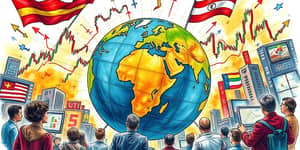
As digital realms expand beyond gaming and entertainment, they are evolving into thriving marketplaces where value is created, exchanged, and governed without borders.
The global metaverse market is experiencing astonishing growth rates year after year, driven by innovation in immersive technologies and decentralized finance. Estimates for 2025 range from $314.7 billion to $552 billion, reflecting differing definitions of core revenue versus ecosystem valuation.
Analysts project this market could exceed $1.3 trillion by 2030, with some forecasts reaching as high as $7.6 trillion by 2032 under an aggressive adoption scenario. Such figures underscore the massive potential for wealth creation worldwide.
While gaming remains the dominant force in the metaverse, other sectors are rapidly gaining momentum. Education platforms, virtual real estate markets, and digital goods services are diversifying the economy and drawing new participants.
Digital fashion, avatars, and entertainment services also contribute significantly, with virtual goods driving new business models and recurring revenue streams.
The emergence of borderless, decentralized financial systems is reshaping how value moves through virtual environments. The metaverse finance market alone was valued at $76 billion in 2024 and is set to skyrocket as lending, borrowing, and trading become embedded within immersive worlds.
Innovations like layer-2 scaling reduce fees by up to 87%, enabling seamless, frictionless digital transactions across platforms. Stablecoins power $88 billion in metaverse usage, while tokenized assets boast a $312 billion market cap.
With 70 million individuals conducting financial transactions and 65 million VR headsets in circulation, the metaverse is quickly becoming a daily destination for millions. Users spend an average of 1 hour and 48 minutes per day in virtual environments, fostering deep engagement.
This widespread usage shows how digital experiences are bridging global communities and redefining social interaction.
Analysis Group estimates the metaverse could contribute 2.8% to global GDP in its tenth year, potentially adding $3 trillion by 2031 if adoption continues at the current pace. Beyond macroeconomic gains, new industries are emerging around virtual design, development, and governance.
Digital construction firms, avatar stylists, virtual event planners, and blockchain auditors are just a few examples of roles born from this ecosystem. The metaverse is creating entirely new career pathways and business models, stimulating entrepreneurship on a global scale.
Advances in AR, VR, mixed reality, and spatial computing underpin the metaverse’s expansion. The spatial computing market alone is projected to grow from $20.43 billion in 2025 to $85.56 billion by 2030.
Major technology companies—including Meta, Microsoft, Google, Epic Games, and Roblox—are investing heavily in hardware, software, and services. These platforms deliver the immersive experiences that fuel economic activity and user engagement.
As financial services migrate into virtual worlds, regulatory frameworks are adapting to ensure security and compliance. Digital banks operating within the metaverse have seen a 14.6% increase in monthly active users after gaining approval from authorities.
Publicly listed companies with metaverse finance divisions have experienced an average 22% year-over-year stock growth, reflecting institutional confidence in this emerging frontier. Decentralized autonomous organizations (DAOs) and governance tokens empower users to participate in decision-making and asset management.
Despite rapid progress, the metaverse faces hurdles around interoperability, security, and digital identity. Ensuring seamless cross-platform experiences and robust protections against fraud and data breaches will be vital.
Addressing these challenges will pave the way for a truly borderless economic system, where individuals and organizations transact freely without geographic constraints.
The metaverse stands at the cusp of transforming how we perceive value, ownership, and collaboration. With unprecedented connectivity across global markets and ever-expanding opportunities, this digital realm is set to redefine economic participation for generations to come.
By leveraging decentralized finance, immersive technologies, and inclusive governance models, the metaverse offers a blueprint for a future economy that transcends boundaries and empowers users worldwide.
References













